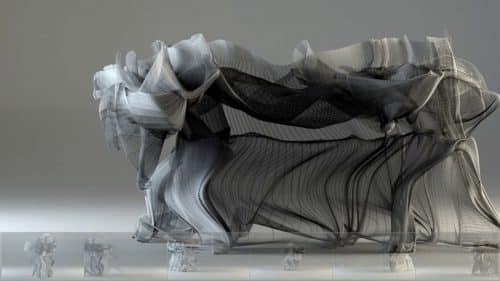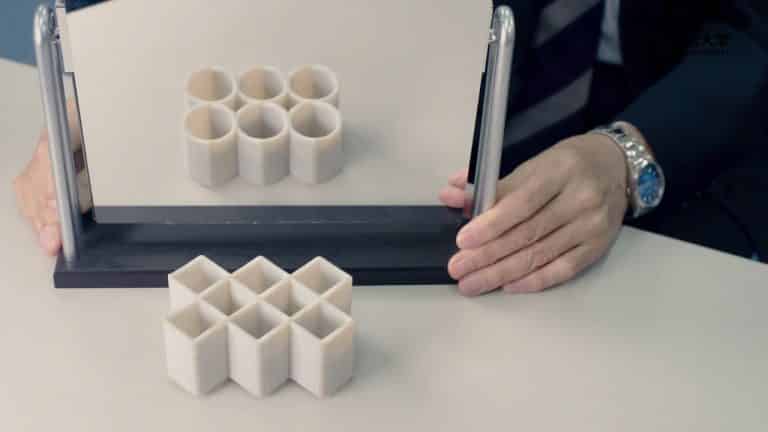Yesterday, while browsing through YouTube videos, I found one that was really quite fascinating. Richard Feynman, a well-known physicist, explains how Isaac Newton was able to explain gravity and how we first estimated the speed of light. I had enlightenment.
Transcript:
Now the moon is 60 times as far away from the earth center than we are. Four thousand miles away from the center in the moon is 240,000 miles away from the center. So if the law of inverse squares, right, and objects that the Earth’s surface should fall in one second by on 28th of an inch times 3600 being the square of 60, because the force has been weakened by 60 times 60, for the inverse square law, in getting out there, to the moon.
And if you multiply a 20th of an inch by 3600, you get about 16 feet. And the law is known already, from Galileo’s measurements, that things fell in one second on the Earth’s surface by 16 feet. So, you see that he was on the right track. There was no going back now. Because a new fact that was completely independent previously, which is the period of the moon’s orbit. And as this is from the Earth connected to another fact, which is how long it takes something to fall in one second. But this was a dramatic test that everything’s all right.
Further, he had a lot of other predictions. He was able to calculate the shape of the orbit if the law were the inverse square and found and D that it was an ellipse. So we got three for two years at work. In addition, a number of new phenomena had obvious explanations. One was the tides due to the pull of the moon, on the Earth, this had sometimes been thought of before, with the difficulty that it was the pole of the moon, on the Earth being here, the water is being pulled up to the moon, then there would only be one tide a day where that bump of water is under the moon.
But actually, you know, there are tides every 12 hours, roughly. And that’s two times a day. There was also another school of thought that had a different conclusion. Their theory was that it was the Earth that was pulled by the moon away from the water.
So actually, Newton was the first to realize what’s going on, that the moon’s force on the Earth and the water are the same at the same distance. And that the water here is closer to the moon. And the water here is further from the moon than the Earth than the rigid Earth. So that the water is pulled more toward the moon here, and here is less toward the moon than the Earth. So there’s a combination of those two pictures that makes double time.
Actually, the Earth does the same trick as the moon, and it goes around the circle. I mean, the force of the moon on the Earth is balanced. But by what by the fact that just like the moon goes in a circle, the balance the rights for us, the right is also going in a circle, actually, the center of the circle is somewhere inside the Earth, it’s also going in a circle the bounds of the moon, so the two of them go around the common center here.
And if you wish this were throwing off by centrifugal force more than the EarthEarth is. And this one is attracted more than the average of the EarthEarth. At any rate. The tides were then explained, and the fact that there were two a day, a lot of other things became quite clear why the Earth is round because everything gets pulled in.
And why it isn’t round, because it’s spinning so that the outside threw out a little bit in the balances. And why the sun and moon around and so on. Now, as science developed and measurements were made ever more accurately, the tests of Newton’s law became much more stringent. And the first careful tests involved the moons of Jupiter.
By careful observations of the way they went around, over a long period, one could be very careful to check that everything was according to Newton turned out not to be the case the moons of Jupiter appeared to be first, get some time so eight minutes ahead of time and sometimes eight minutes behind schedule were scheduled as the calculated values.
According to Newton’s laws, it was noticed that they were ahead of schedule when they were close when Jupiter was close to the EarthEarth and behind schedule and was far away from a rather hard circumstance. And Mr. Roemer, having confidence in the law of gravitation, came to an interesting conclusion that it takes light some time to travel from the moons to the Earth.
And that what we’re looking at when we see the moons are not how they are now but how they were the time of gold that it took the light to get here. Now when Jupiter’s near us, it takes less time for the light to come. And when Jupiter is further, it takes a longer time. So he had to correct observations for the differences in time.
And by the fact that they were this much too early or that much too late, I was able to determine the velocity of light. This was the first demonstration that light was not an instantaneously propagating material. I bring this particular matter to your attention because it illustrates something that can be used to find another one when a law is right. That by having confidence in this law, if something is the matter, it suggests perhaps some other phenomena.
And, with Reid had not known the law of gravitation, we would have taken much longer to find the speed of light because we would not have known what to expect of Jupiter satellites. This process has developed into an avalanche of discoveries. Each new discovery permits the tools for much more discovery. And this beginning is the beginning of that avalanche, which has gone on now for 400 years in a continuous process, and we’re still avalanching along at high speed.











